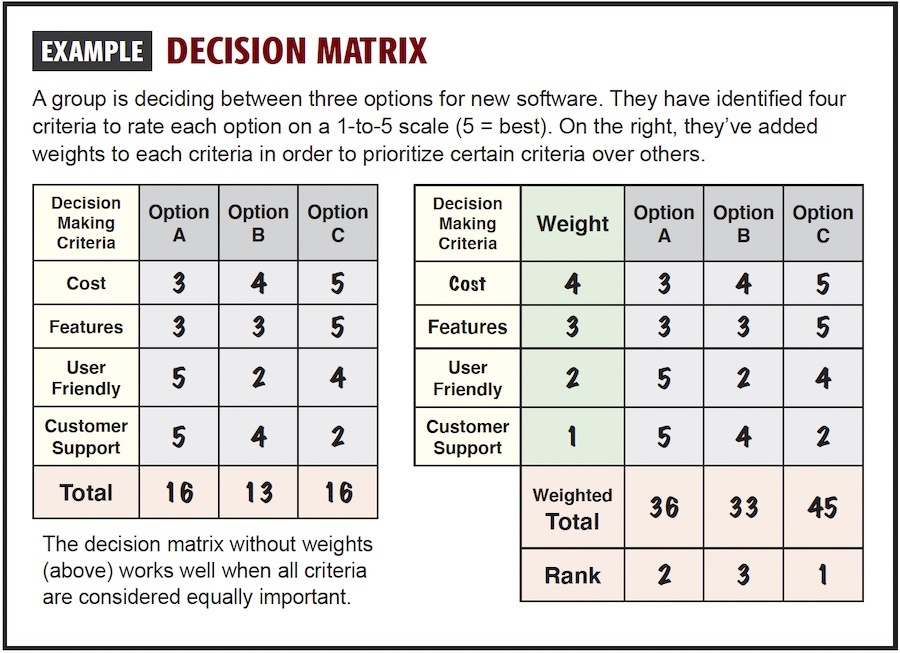A decision matrix helps evaluate choices against set criteria. By assigning scores to each option, it makes it easier to see which choice aligns best with what you're looking for. (This tool is also called a criteria rating form.)
Video: Decision Matrix![]() (4:58 min.)
(4:58 min.)
Visual example:
Click to expand – will open in a new window
Step by step:
1. List criteria: Start by listing the criteria or factors you want to evaluate. These could be features, qualities, or attributes that are important for making a decision or comparison. Here is a sample of possible criteria:
▪ Service to customers
▪ Effectiveness
▪ Importance to the organization
▪ Link to unit/area goal(s)
▪ Time to implementation
▪ Ease of implementation
▪ Cost
2. Set rating scale: Decide on a rating scale to assess each criterion. It's typically a numeric scale (e.g., 1 to 5) with 5 being the most favorable rating.
3. Evaluate options: For each criterion listed, rate or score each option, item, or alternative based on how well it meets or satisfies that specific criterion. Use the predetermined rating scale to assign a score or rating.
4. Calculate scores: Once you've rated each option for all criteria, calculate the total scores or average ratings for each option by summing up the individual scores or averaging the ratings assigned to each criterion.
5. Compare and analyze: Review the scores or ratings for each option to compare and analyze their performance or suitability based on the established criteria. Identify strengths, weaknesses, and differences among the options to inform decision-making or selection.
6. Make an informed decision: Use the criteria rating form to facilitate discussion, prioritize options, or make an informed decision by considering the ratings, scores, and evaluations of each option in relation to the defined criteria.
|
• Use a screen-shared spreadsheet for real-time rating. |